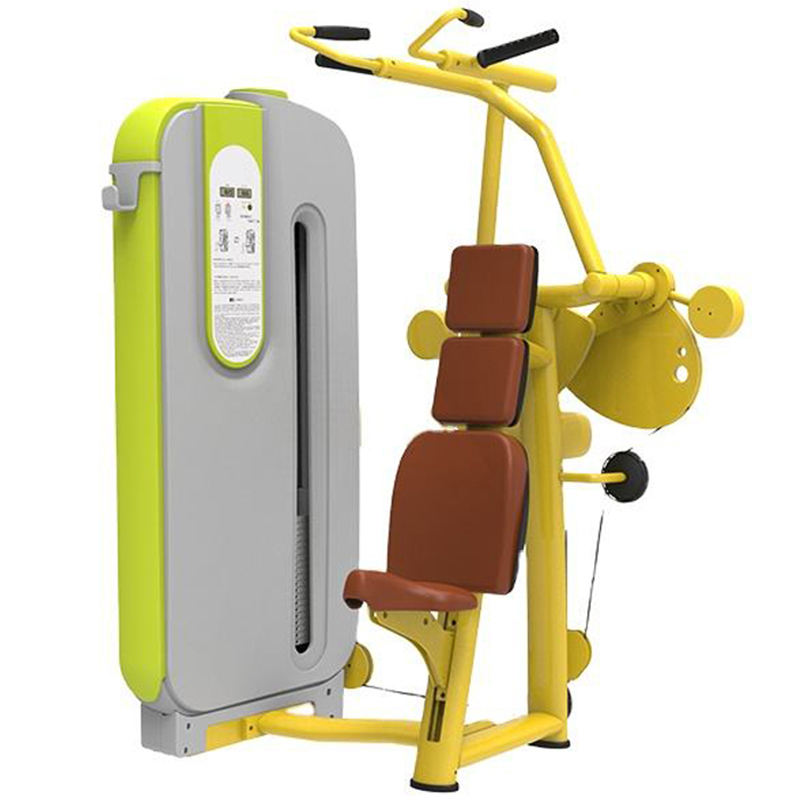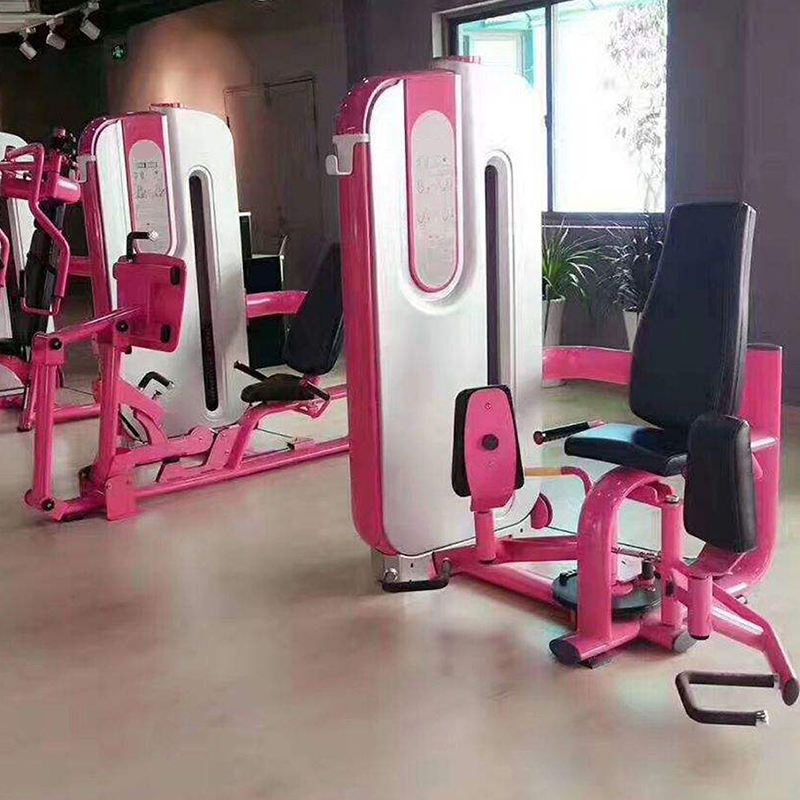A pull-down machine, often referred to as a lat pulldown machine, is a popular piece of strength training equipment commonly found in gyms and fitness centers. Here’s a detailed description of a typical pull-down machine:
- Design and Construction:
- Frame: Constructed from sturdy steel or alloy, designed to support the weight stack or plate-loaded system.
- Seat and Knee Pads: Features an adjustable seat with thigh or knee pads to stabilize the body during exercises and ensure proper alignment.
- Pulley System: Utilizes a pulley system with cables or rods connected to a weight stack or plate-loaded system.
- Handles: Equipped with a wide bar or various handle attachments (e.g., straight bar, V-bar, or rope attachments) for different grip positions.
- Weight Stack or Plate-Loaded System:
- Resistance: Offers resistance through a weight stack (stack of rectangular weight plates with a selector pin) or plate-loaded system (where users load standard or Olympic weight plates onto a peg).
- Adjustability: Allows users to adjust the resistance by selecting different weight increments using a pin or by adding/removing weight plates.
- Exercise Motion:
- Movement Pattern: Involves a vertical pulling motion, typically targeting the latissimus dorsi muscles (lats) of the back.
- Variations: Users can perform wide-grip, narrow-grip, or neutral-grip variations, which change the emphasis on different parts of the back and arms.
- Range of Motion: Adjusts to accommodate different user heights and preferences, ensuring a full range of motion during exercises.
- Safety and Comfort Features:
- Stability: Non-slip footplates or footrests provide stability and support during exercises.
- Adjustability: Adjustable seat height and knee pads ensure proper alignment and comfort during workouts.
- Safety Stop: Some machines include a range limiter or stopper to set the maximum range of motion, preventing overextension or injury.
- Benefits:
- Muscle Targeting: Primarily targets the latissimus dorsi muscles (lats), helping to develop width and strength in the back.
- Compound Movement: Engages other muscles in the upper body, including the biceps, shoulders, and forearms, depending on the grip and technique used.
- Strength Development: Builds upper body strength and muscle endurance, improving overall fitness and functional movement.
- Versatility: Can be used for various exercises beyond lat pulldowns, such as triceps pushdowns, biceps curls, and seated rows, depending on available attachments and configurations.
- Usage and Applications:
- Strength Training: Essential for developing upper body strength and muscle definition, particularly in the back, arms, and shoulders.
- Sport-Specific Training: Used by athletes to enhance performance in sports requiring upper body strength and pulling movements (e.g., climbing, swimming).
- Rehabilitation: Adapted for use in physical therapy and rehabilitation programs to strengthen the back and improve range of motion after injuries or surgeries.
- Maintenance:
- Cleaning: Wipe down the machine after each use to remove sweat and prevent corrosion.
- Inspect Components: Regularly check cables, pulleys, and weight stacks for wear and tear, ensuring smooth operation and user safety.
- Lubrication: Apply lubricant to moving parts as recommended by the manufacturer to maintain optimal performance and extend the machine’s lifespan.
In summary, a pull-down machine is a versatile and effective piece of strength training equipment designed to target the muscles of the back and upper body through vertical pulling motions. It offers adjustable resistance, safety features, and ergonomic design, making it suitable for users of varying fitness levels and goals.



















































Reviews
There are no reviews yet.